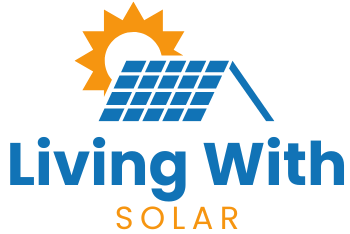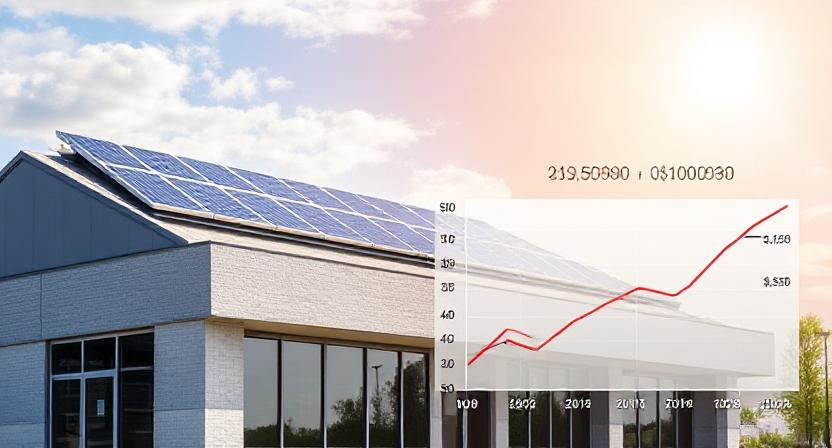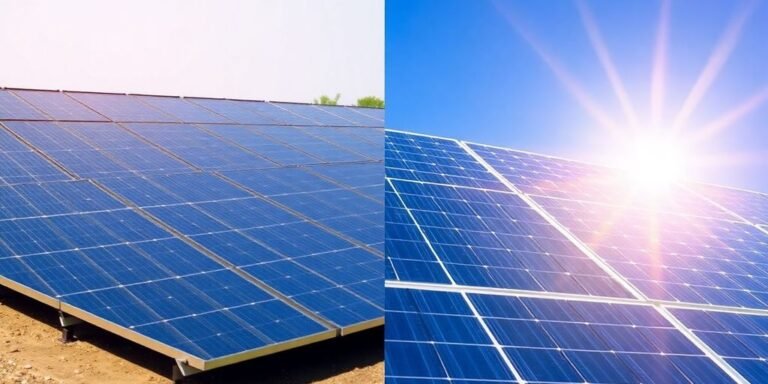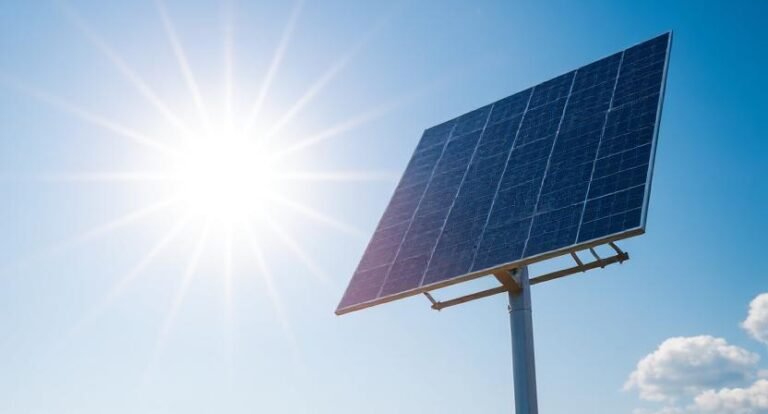When considering the implementation of solar panels for your business, understanding the return on investment is crucial. By evaluating costs, potential savings, and incentives, you can make a well-informed decision. However, the key lies not only in the initial calculations but also in uncovering the broader implications of such an investment. By exploring the long-term benefits and strategic advantages that solar panels can offer, you will be able to grasp the full picture. Stay tuned for a deeper insight into maximizing the ROI potential of solar panels for your business.
Key Takeaways
- Assess total solar panel costs, including equipment, installation, and maintenance.
- Estimate energy savings by analyzing current usage and sunlight exposure.
- Research tax incentives, rebates, and financing options to enhance ROI.
- Calculate payback period by dividing total cost by annual savings.
- Consider long-term benefits like fixed energy costs and increased property value.
🔋 Discover Energy Independence – Find Out More →
Importance of ROI Calculation
Calculating the return on investment (ROI) for solar panels is crucial for making informed financial decisions about renewable energy.

Understanding the ROI helps you determine the financial benefits and feasibility of investing in solar panels for your home or business.
By analyzing the ROI, you can assess how long it will take to recoup your initial investment through energy savings and potential incentives.
Knowing the ROI also allows you to compare the financial returns of investing in solar panels versus other forms of renewable energy or traditional energy sources.
This comparison helps you prioritize your investment options based on the potential long-term savings and benefits.
Moreover, calculating the ROI on solar panels provides insight into the environmental impact of your investment.
By determining the amount of clean energy generated and carbon emissions reduced over the system’s lifetime, you can evaluate the sustainability benefits alongside the financial gains.
In essence, understanding the ROI of solar panels empowers you to make informed decisions that align with your financial goals, environmental values, and long-term energy needs.
Assessing Solar Panel Costs
Understanding the financial aspects of solar panel installation involves carefully analyzing the costs associated with the system.
When assessing solar panel costs for your business, it’s essential to consider factors such as equipment expenses, installation fees, maintenance costs, and potential incentives or rebates available in your area.
To help you better grasp the breakdown of solar panel costs, below is a table outlining the typical expenses involved in a solar panel system installation:
| Cost Category | Description | Estimated Cost Range |
|---|---|---|
| Equipment | Solar panels, inverters, mounting hardware, wiring, etc. | $10,000 – $30,000 |
| Installation | Labor costs for system design, permits, and installation | $2,000 – $5,000 |
| Maintenance | Regular upkeep, repairs, and monitoring services | $100 – $500/year |
| Incentives/Rebates | Potential tax credits, rebates, or other financial incentives | Varies |
| Total | Sum of all costs involved in acquiring and maintaining the system | $12,100 – $35,500 |
Estimating Energy Savings
To gauge the potential impact of solar panels on your energy expenses, estimating energy savings is crucial.
Start by analyzing your current energy usage and costs. Consider factors like peak electricity rates, average monthly consumption, and any seasonal variations.
With this data, you can project how much electricity your solar panels will generate based on your location’s sunlight exposure and system size.
Typically, solar panels can offset a significant portion of your electricity bill, especially during peak sun hours.
By estimating your energy savings accurately, you can determine the payback period for your solar panel investment.
Keep in mind that energy prices tend to fluctuate, so it’s essential to factor in potential future savings as well.
Understanding your energy consumption patterns and how solar panels can reduce your reliance on the grid will give you a clearer picture of the financial benefits of investing in solar energy for your business.
Understanding Tax Incentives
Tax incentives play a crucial role in making solar panel installations more financially attractive for businesses and homeowners.
These incentives can significantly reduce the initial investment cost and shorten the payback period for solar projects.
One of the most common tax incentives is the Investment Tax Credit (ITC), which allows businesses to deduct a percentage of the solar system’s cost from their federal taxes.
Additionally, some states offer their own tax credits or exemptions for solar energy systems.
When considering the financial benefits of solar panels, it’s essential to factor in these tax incentives to get a more accurate picture of the return on investment.
Here is a simple breakdown of some common tax incentives available for solar installations:
| Tax Incentive | Description |
|---|---|
| Investment Tax Credit (ITC) | Allows businesses to deduct a percentage of the solar system’s cost from federal taxes. |
| State Tax Credits | Some states offer tax credits or exemptions for solar energy systems. |
| Accelerated Depreciation | Businesses can depreciate the value of the solar system over a shorter period for tax purposes. |
| Property Tax Exemptions | Certain states provide exemptions on property taxes for solar installations. |
Factoring in Rebates
When considering the financial impact of solar panels, incorporating rebates into your calculations can further enhance the return on investment.
Rebates are incentives offered by governments, utility companies, or other organizations to help offset the upfront costs of installing solar panels.
These rebates can significantly reduce the initial investment required, making solar energy more affordable for businesses.
When factoring in rebates, be sure to research what options are available in your area. Some rebates may be based on the size of your solar system, while others may depend on the type of equipment you choose.
Additionally, rebate programs can change over time, so it’s essential to stay informed about the current offerings.
By taking advantage of rebates, you can lower the overall cost of your solar panel installation and shorten the payback period.
This, in turn, will increase your return on investment and make transitioning to solar power even more financially advantageous for your business.
Evaluating Financing Options
Considering different financing options is crucial when planning to invest in solar panels. Here are four key options to evaluate:
- Cash Purchase: Opting to pay upfront with cash provides immediate ownership of the solar panels and allows you to benefit from the savings and incentives without ongoing loan payments.
- Solar Loans: These loans are specifically designed for solar projects and often have favorable terms such as low-interest rates and flexible repayment schedules.
- Solar Leases: With a solar lease, a third party owns the solar panels, and you pay a fixed monthly fee to use the system. This option requires little to no money down but may result in lower overall savings compared to ownership.
- Power Purchase Agreements (PPAs): Under a PPA, a solar provider installs panels on your property and sells you the electricity they produce at a predetermined rate. This option typically requires no upfront costs and can provide immediate savings on electricity bills.
Calculating Payback Period
To assess the financial viability of investing in solar panels, you need to calculate the payback period.
The payback period represents the time it takes for the savings generated by the solar panels to equal the initial investment cost.
To calculate this, divide the total cost of the solar panel system by the annual savings it provides.
For example, if the solar panels cost $50,000 and save you $10,000 per year on energy bills, the payback period would be five years ($50,000 divided by $10,000).
A shorter payback period indicates a quicker return on investment. Factors like energy usage, local electricity rates, available incentives, and system performance can all influence the payback period.
It’s crucial to accurately estimate these variables to get a realistic payback period calculation. Once you have this number, you can make a more informed decision about whether investing in solar panels makes financial sense for your business.
Analyzing Long-Term Benefits

How do solar panels continue to benefit you in the long run beyond the initial payback period?
Once you’ve recouped your initial investment, the long-term advantages of solar power can significantly boost your business’s bottom line.
Here are some key ways solar panels provide ongoing benefits:
- Energy Savings: Solar panels generate electricity from sunlight, reducing your reliance on expensive grid power.
- Fixed Energy Costs: By generating your own power, you can avoid the volatility of utility prices, providing stability to your budget.
- Tax Incentives: Many governments offer tax credits or rebates for businesses that install solar panels, providing additional financial benefits.
- Increased Property Value: Solar panels can enhance the value of your property, making it more attractive to potential buyers if you decide to sell in the future.
These long-term benefits make investing in solar panels a strategic decision that not only pays off in the short term but continues to deliver returns well into the future.
Considering Maintenance Costs
Amidst the benefits of solar panel installation, it’s crucial to factor in the aspect of maintenance costs to ensure optimal performance and longevity of your system.
Regular maintenance is essential to keep your solar panels operating efficiently. Factors such as cleaning debris, checking for shading issues, and inspecting the electrical components are all part of routine maintenance.
While solar panels are durable and require minimal maintenance, it’s still important to budget for occasional costs.
These may include professional cleaning services, inverter replacements, or repairs due to weather-related damage.
By staying proactive with maintenance, you can prevent minor issues from escalating into costly problems.
Consider including maintenance costs in your overall financial calculations when determining the return on investment for your solar panel system.
Proper upkeep not only ensures the longevity of your system but also maximizes its energy production, ultimately leading to greater savings in the long run.
Making an Informed Decision
As you evaluate whether to invest in solar panels for your home or business, it’s crucial to make an informed decision based on various factors.
To ensure you make the best choice, consider the following:
- Energy Needs: Analyze your current energy consumption patterns to determine how solar panels can help offset your electricity usage.
- Location: Assess the amount of sunlight your property receives throughout the year to gauge the solar potential and effectiveness of the panels.
- Financial Incentives: Research available rebates, tax credits, and other incentives offered by government entities or utility companies to reduce the upfront cost of installation.
- ROI Calculation: Utilize ROI calculations to estimate the payback period for your solar panel investment, considering factors like energy savings and potential revenue from selling excess power back to the grid.
Conclusion
Now that you’ve calculated the ROI on solar panels for your business, you can make an informed decision about investing in renewable energy. By assessing costs, estimating savings, and factoring in incentives, you have a clearer picture of the potential benefits. Remember to consider long-term advantages like increased property value and reduced energy expenses. With all this information in hand, you’re ready to take the next step towards a more sustainable future for your business.
Frequently Asked Questions
Can Solar Panels Increase the Property Value of My Business?
Solar panels can indeed increase your business property value. They are seen as a valuable asset that can lower energy costs and demonstrate sustainability practices. This can attract eco-conscious buyers and potentially raise your property’s overall worth.
How Do Weather Conditions Affect Solar Panel Efficiency?
Weather conditions impact solar panel efficiency. Sunlight levels, temperature, and cloud cover influence energy production. Ensure panels are properly installed and maintained to maximize efficiency. Consider local climate when planning solar installations for your business.
Are There Any Additional Permits or Regulations to Consider?
Check with local authorities about specific permits and regulations for solar panel installation. Research building codes, zoning laws, and utility interconnection requirements. Compliance is crucial for successful solar projects and avoiding costly setbacks.
Can Solar Panels Be Installed on All Types of Roofs?
Yes, solar panels can typically be installed on all types of roofs. It’s important to assess the condition and orientation of your roof to ensure optimal performance. Consulting with a professional can provide tailored recommendations.
What Happens to Excess Energy Generated by Solar Panels?
When excess energy is generated by solar panels, it can be stored in batteries or fed back into the grid for credits. This helps you maximize savings and reduce your electricity bills.





